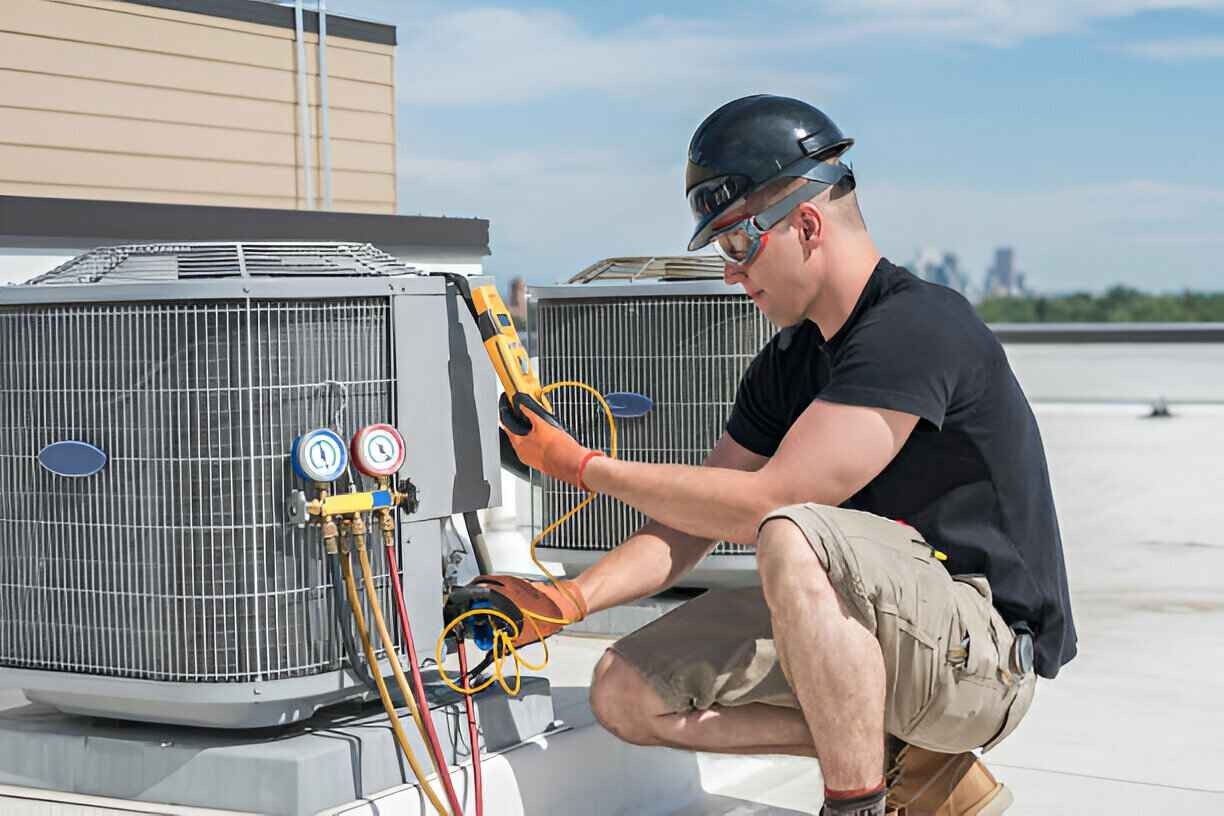AC Repair in Riverview, FL


Why timely AC repair matters in Riverview, FL
Riverview experiences long, hot, humid summers and occasional severe storms. That climate places heavy demand on residential air conditioners year-round. Small issues left unaddressed can quickly escalate into compressor damage or complete system failure, which is both uncomfortable and expensive. Prompt, professional repair restores comfort, improves energy efficiency, and reduces the risk of breakdowns during peak heat.
Common AC problems in Riverview homes
No cooling / insufficient cooling
- Signs: warm air from vents, large temperature differences between indoors and thermostat setting.
- Common causes: refrigerant loss, failing compressor, restricted airflow from dirty filters or clogged ducts, or thermostat miscalibration.
Compressor failures
- Signs: unit runs but outdoor fan doesn’t, loud grinding or humming noises, breakers tripping.
- Causes: electrical faults, overheating from restricted airflow, age-related wear, or refrigerant issues.
Fan motor or blower failures
- Signs: weak airflow, strange noises, intermittent operation.
- Causes: motor burnout, worn bearings, capacitor failure, or debris buildup—coastal salt air and humidity can accelerate corrosion.
Refrigerant leaks
- Signs: steady drop in cooling performance, ice on evaporator coil, hissing noises.
- Causes: corrosion of copper lines, vibration-related fittings becoming loose, or factory defects in older systems.
Thermostat issues
- Signs: system not responding to thermostat commands, frequent short-cycling, inaccurate temperature readings.
- Causes: faulty thermostat hardware, poor calibration, or wiring problems.
Drain line clogs and frozen coils
- Signs: water pooling around indoor unit, musty odor, reduced cooling with ice on coils.
- Causes: high humidity, biological growth in condensate lines, or low refrigerant causing coil freeze.
Diagnostic process: what a technician does on the first visit
- Initial intake review
Technician documents system make/model, age, recent service history, and symptoms. - Visual inspection
Check indoor and outdoor units for obvious damage, debris, or electrical issues; inspect air filter and duct access points. - Electrical and safety checks
Test breakers, fuses, capacitors, contactors, and safety switches to ensure safe operation. - Airflow and temperature measurements
Measure supply and return temperatures and airflow to identify restrictions or duct issues. - Refrigerant evaluation
Check refrigerant pressures and look for signs of leaks using industry-standard detection methods. - Component testing
Evaluate compressor, fan motor, thermostat operation, and control board function. - Customer review and estimate
Provide a clear, written diagnosis, repair options, estimated time to fix, parts required, and expected outcomes before any work begins.
Typical repair solutions and what they involve
- Refrigerant leak repair and recharge
Locate and repair leaks, replace damaged lines or fittings if needed, and recharge with manufacturer-recommended refrigerant following EPA guidelines. - Compressor or motor replacement
Replace failed compressors or motors, test start/run capacitors, and verify proper electrical protection. - Fan, blower, and capacitor replacement
Swap worn motors, replace failing capacitors, and balance or clean fans to restore airflow. - Thermostat repair or upgrade
Recalibrate or replace thermostats; recommend programmable or smart thermostats for improved efficiency if appropriate. - Drain line clearing and coil cleaning
Remove clogs, clean condensate pans, and treat coils to restore proper condensate flow and heat transfer. - Electrical repairs
Tighten or replace contactors, relays, fuses, breakers, and control board components to ensure reliable operation.
Emergency and same-day repair options
In Riverview, high temperatures and humidity can make AC failures urgent. Emergency and same-day repair options typically prioritize:
- Health and safety situations, such as loss of cooling during extreme heat or homes with vulnerable occupants.
- Failures that risk further system damage, like a seized compressor or major refrigerant leak.
- On-site actions may include temporary measures to restore cooling or prevent further damage until full repairs or replacements can be completed safely.
Technician qualifications and parts standards
- Certifications and training
Technicians should hold EPA 608 certification for refrigerant handling and demonstrate ongoing HVAC training. Look for technicians experienced with local climate-related issues such as humidity control and salt-air corrosion. - Background checks and professionalism
Professionals working in homes undergo background screening and follow safety protocols on-site. - Parts and equipment
Use of OEM or OEM-equivalent replacement parts for compressors, coils, capacitors, contactors, thermostats, and line sets helps ensure reliability. Refrigerants are handled per federal and state regulations using approved refrigerant types for the system.
Transparent estimates and warranty information
- How estimates are provided
After diagnosis, expect a written estimate that itemizes labor, parts, and diagnostic fees where applicable, along with a clear explanation of repair options and expected timelines. Estimates should make clear what work is required immediately and what can be deferred. - Pricing transparency practices
Reputable services explain whether charges are flat-rate, time-and-materials, or a combination, and whether any warranty or diagnostic fee is credited if you proceed with repair. - Warranty coverage
Repairs typically include written warranties covering workmanship and replaced parts for a specified period. Manufacturer warranties may cover certain components separately. Warranty terms should be provided in writing and explain what actions can void coverage, such as lack of routine maintenance.
Maintenance tips to reduce repair needs
- Change or clean filters regularly to maintain airflow and efficiency.
- Keep the outdoor unit clear of vegetation, debris, and salt build-up common near Tampa Bay.
- Schedule routine tune-ups before peak summer months to catch wear and refrigerant loss early.
- Monitor thermostat behavior and indoor humidity—significant changes can indicate developing issues.
What to expect when scheduling service in Riverview, FL
Scheduling typically involves choosing the service type (diagnostic, repair, emergency), providing system details and symptoms, and selecting an arrival window. Technicians arrive prepared with diagnostic tools and common replacement parts to maximize the chance of same-day repair when feasible. After work is completed, you should receive a written invoice and warranty paperwork outlining services performed and parts replaced.
This information prepares homeowners in Riverview, FL to make informed decisions about AC repair, understand the diagnostic and repair process, and prioritize solutions that restore comfort, protect equipment life, and maintain energy efficiency in a climate that demands dependable cooling.
Service Areas


